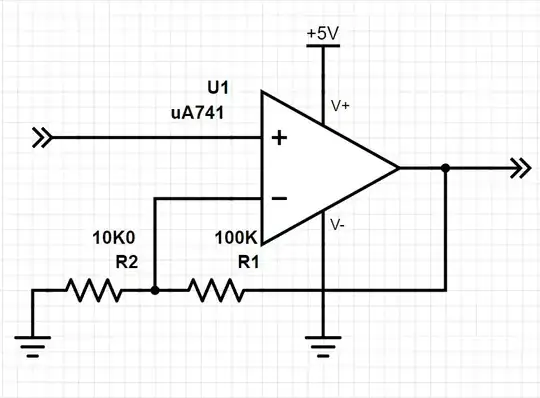I am trying to use a non-inverting amplifier to boost a 1kHz signal with a DC component of 130mV and a peak to peak swing of 52mV.
I am using a uA741 General Purpose OPamp, powered via 5V from USB (VCC- = 0V, VCC+ = 5V). I have a 100kOhm resistor from Output to V- and a 10kOhm resistor from V- to GND. On paper, this should give me a gain of 11. The signal is being fed into V+. I have left the offsets unconnected for now. The whole system is implemented on a breadboard.
Here's a schematic of the circuit:

However, when I apply 5V to this circuit the output is just glued to 4V. Interestingly, this is also the case when I connect V+ to GND.
I have removed all connections and reconnected everything to make sure that it's wired up correctly. I believe it is. I tried replacing the uA741 with an OPA27GP (just grabbing what's nearby) but with the same effect.
At this point I realize that I am out of my depth. I ran this circuit (with an ideal op-amp) on https://www.falstad.com/circuit/ and it performed just as I would expect.
Does anyone know what might be the issue here?